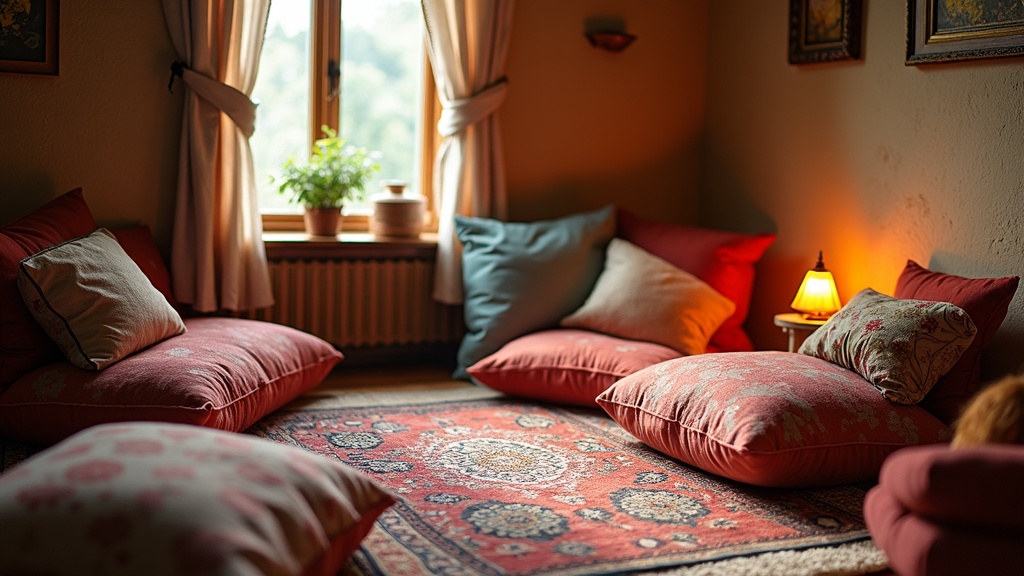Guiding children as they start their adventure with personal prayer can feel really special and a bit challenging at the same time. If you’re looking for ways to help kids connect with their faith and build a habit of open conversation with God, it helps to know where to start and how to keep it simple enough for them to enjoy. I’ve found that a gentle approach, rooted in everyday practice, creates a stronger foundation for spiritual growth. Here are some practical steps and tips that can help your child—or any child in your care—get more comfortable with personal prayer.

Why Personal Prayer Matters for Kids
Personal prayer gives kids a way to talk directly to God, in their words, without any pressure to perform. It teaches them about honesty, reflection, and gratitude. These values spill over into a lot of other areas of life. This quiet time can build confidence, encourage them to express feelings, and help them process things they may not feel like telling others right away.
When I first introduced my own kids to prayer, I noticed how much it helped them feel heard. Kids worry about school, friendships, and sometimes even bigger ideas, so having an outlet like prayer is pretty handy for emotional well-being. According to studies from the Barna Group, kids who get involved in regular, meaningful prayer show signs of higher emotional health, including resilience and empathy toward others.
Throughout history, parents and caregivers have used prayer as a way to pass on faith. Even in super busy times, these quiet moments together offer a break and a real chance for connection, not just with God but with each other as well. Taking just a few minutes for prayer every day makes an impact over weeks and years, building bonds and trust.
Getting Started: Creating a Comfortable Environment
Before expecting children to get into personal prayer, making sure they feel comfortable is really important. Physical surroundings can make a huge difference in helping a child feel safe and focused.
Here are some things I do at home that work pretty well:
- Pick a Cozy Spot: Soft lighting, cushions, or a small corner with a few familiar objects helps set the mood for calm reflection. Kids are more likely to relax and open up in a space that feels like theirs.
- Keep Prayer Times Short: Attention spans vary a lot with kids, so starting with just a minute or two is totally fine. Over time, as they get used to it, you can stretch the time a bit.
- Allow for Movement: Some kids like to kneel, some want to sit or even walk around. Letting them move a bit during prayer can help them concentrate better and keeps the experience from feeling rigid.
It’s also helpful for the space to be quiet. Maybe just before bedtime or after breakfast on weekends. Having prayer blended into a daily routine, like brushing teeth or reading before bed, signals to your child that it’s a natural part of life—not just something “extra.”
Adding a small lamp, a favorite blanket, or soft background music can make the environment even more inviting. Even lighting a child-safe candle or displaying a cherished artwork can give them a sense of ownership over their prayer spot.
Basic Steps to Guide Kids in Personal Prayer
 The idea of prayer can sound kind of big at first, especially for young kids. Breaking it down into smaller steps has worked well in my experience as both a parent and a teacher. Here’s one way to ease in:
The idea of prayer can sound kind of big at first, especially for young kids. Breaking it down into smaller steps has worked well in my experience as both a parent and a teacher. Here’s one way to ease in:
- Start with Thankfulness: Encourage your child to name one thing they’re grateful for that day. Whether it’s a snack, a sunny morning, or seeing a friend, starting with simple gratitude is easy for kids to embrace.
- Ask for Help: Invite them to talk about something that worries them or where they’d like God’s help, using their own words. This models vulnerability and helps them learn to give their concerns to God.
- Say Sorry: If your family includes confession in prayer, this can be as simple as saying, “Sorry for anything I did that was wrong today.” Even young children learn a lot by practicing honesty.
- Talk About Others: Suggest praying for someone else, like a family member, friend, teacher, or even a neighbor who needs care. This step introduces empathy and compassion early on.
- End with Thanks Again: Finish with a simple, “Thank you, God, for hearing me.” This reinforces the idea that prayer is a two-way relationship.
This structure makes it less intimidating and helps the prayer feel personal instead of scripted. Over time, kids will probably create their own rhythm and words, which is really encouraging to watch. As they grow older, let them know it’s okay to try saying prayers silently or even journal their thoughts if that feels better for them.
Common Hurdles and Practical Solutions
Like any habit, guiding kids in personal prayer comes with a few bumps along the way. Here are some hurdles I’ve bumped into, and a few things that have worked to keep prayer time enjoyable rather than stressful:
- Short Attention Spans: It’s totally normal if kids get wiggly or distracted. Keeping things brief or letting them draw or whisper prayers works well. Some families mix in coloring time or even let kids shape playdough as they pray.
- Not Knowing What to Say: Some kids feel nervous that their words aren’t “right.” I remind them that there’s no perfect way to pray; just talking naturally is great. Sometimes using a favorite book or borrowed words helps get things started.
- Lack of Interest: Kids go through stages where prayer just doesn’t seem interesting. Taking turns, introducing music, or using storybooks focused on prayer can add a bit of variety, so kids don’t feel bored or forced.
- Feeling Self-Conscious: Private one on one time makes it easier, and sometimes, letting the child see me pray out loud helps model what prayer can look like without pressure. Sharing my own simple prayers helps kids feel safe.
Dealing With Silence
Sometimes, silence happens, and that’s okay. I usually just say, “If you don’t feel like saying anything, maybe tell God how you feel inside.” Giving kids permission to just be quiet can open up space for prayer to become comfortable and meaningful in its own way. Silence can also help kids hear their thoughts and get more comfortable with stillness, which is good for emotional health.
Age Differences
The approaches above can be tailored by age. Little ones love routine and repetition, while older kids might prefer journaling, reading short Bible verses, or using prompts to help think through their day. You might give a preschooler the same prayer every night, but encourage a preteen to keep their own prayer journal.
As kids grow, encourage them to ask their own questions about prayer. Maybe they want to know if God hears them, what to do when they’re angry, or how to pray for a friend. Make space for honest chats and let them stumble upon their own answers in a safe environment.
Going Deeper: Creative Ways to Encourage Prayer
 Once a child feels comfortable with basic prayer, you might notice they’re eager to try new things or express themselves differently. These ideas can help keep things fresh and personal, and make prayer time something they look forward to:
Once a child feels comfortable with basic prayer, you might notice they’re eager to try new things or express themselves differently. These ideas can help keep things fresh and personal, and make prayer time something they look forward to:
Use Visual Aids or Objects: Prayer jars, where kids write down their prayers and drop them in, special candles, or small prayer stones make the habit tangible and interactive. Having something to touch or see while praying gives kids another way to connect.
Incorporate Art or Music: Drawing their prayers, listening to gentle songs, or even composing short thank you notes for God can be powerful ways for creative kids to express themselves. Music in particular can help soothe nerves or inspire joy, making prayer time eye-catching and special.
Try Different Prayer Styles: Some days, I’ll introduce simple breath prayers, breathing in and out slowly with quiet words, guided meditations, or reading short poems or psalms aloud to mix it up. Creating their own prayer cards with favorite scriptures or phrases gives kids ownership over their faith and keeps things interesting.
These activities help children understand that prayer isn’t just one thing; it can be flexible, creative, and even fun. Don’t be afraid to let your child suggest new ideas or switch up the routine if it keeps their interest alive.
Frequently Asked Questions
Parents and caregivers often have a few questions when starting this adventure. Here are some common ones I’ve come across:
Question: What if my child doesn’t want to pray?
Answer: Forcing prayer usually leads to more resistance. Instead, I find modeling prayer myself, inviting them gently, or weaving prayer into natural moments, like before meals or rides to school, helps a lot over time. Giving choices and making it pressure free works wonders.
Question: How can I tell if prayer is “working” for my child?
Answer: Prayer isn’t always about obvious results. Look for small signs, such as greater calm, willingness to talk, or a bit more patience. It’s not about doing it perfectly but feeling comfortable reaching out to God. If they begin taking initiative or asking new questions, it shows prayer has started to matter to them.
Question: Are there resources or books that help with guiding children?
Answer: Yes! There are prayer books for kids, devotionals like “Indescribable: 100 Devotions for Kids About God and Science,” plus online guides from trusted faith organizations that offer tips and sample prayers. Your local library may also have some worth checking out. Consider talking with faith leaders at your place of worship or swapping recommendations with other parents.
Question: How old should my child be before starting personal prayer?
Answer: Kids as young as two or three can begin simple forms of prayer, even if it’s just saying “thank you” or “help me.” Adapt your approach to your child’s level of understanding, and keep it fun and relaxed. The goal is to make prayer natural, not something to stress over.
Building a Lifelong Habit
Helping children build a habit of personal prayer is really about showing up, being patient, and gently guiding them into their own connection with God. Over time, I’ve seen how these small, honest moments lead to growth in both faith and emotional maturity.
The most important thing is to approach personal prayer as an ongoing invitation, never forced and never rushed. Even if your child’s prayer sounds simple or even silly to adult ears, it’s their way of building a real, lasting relationship with God. As they grow, both their prayers and their understanding of faith will grow too. If you stick with the basics and encourage small steps, guiding children in personal prayer is an adventure worth having—one day and one conversation at a time.
